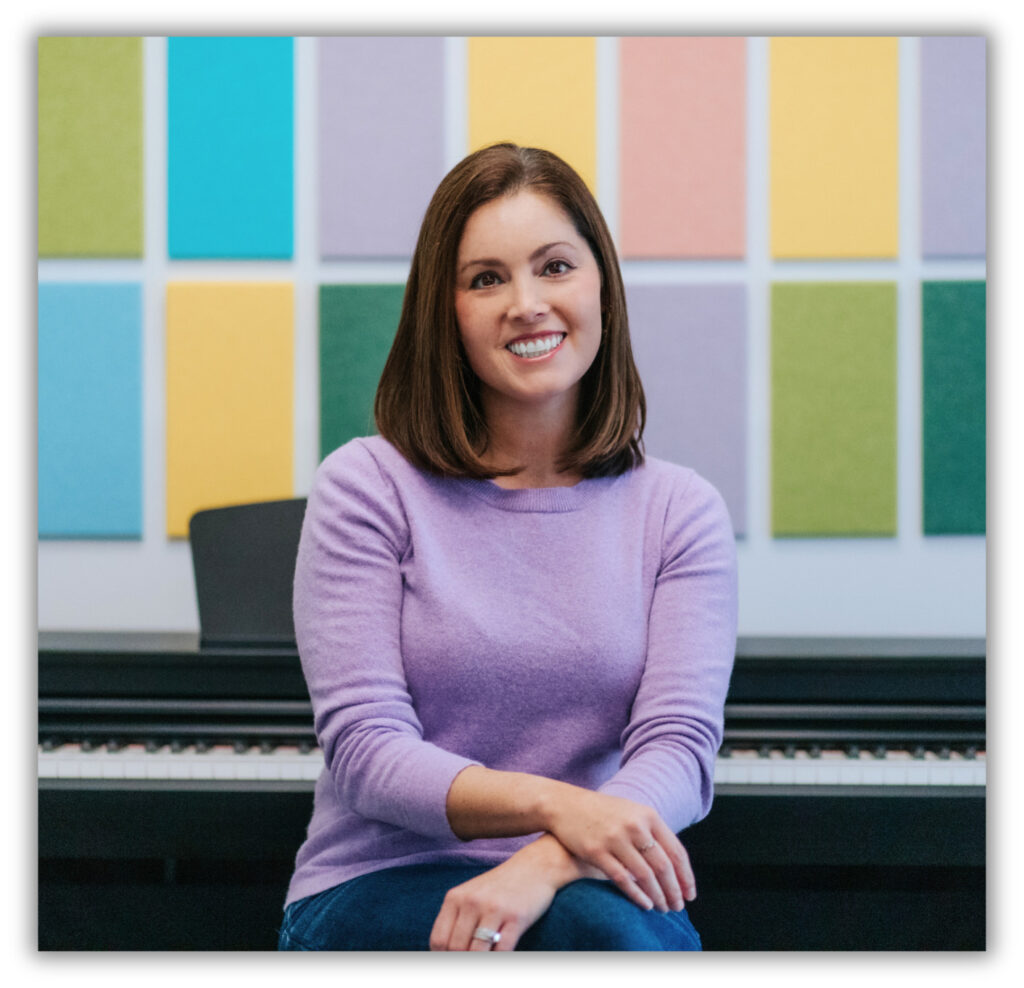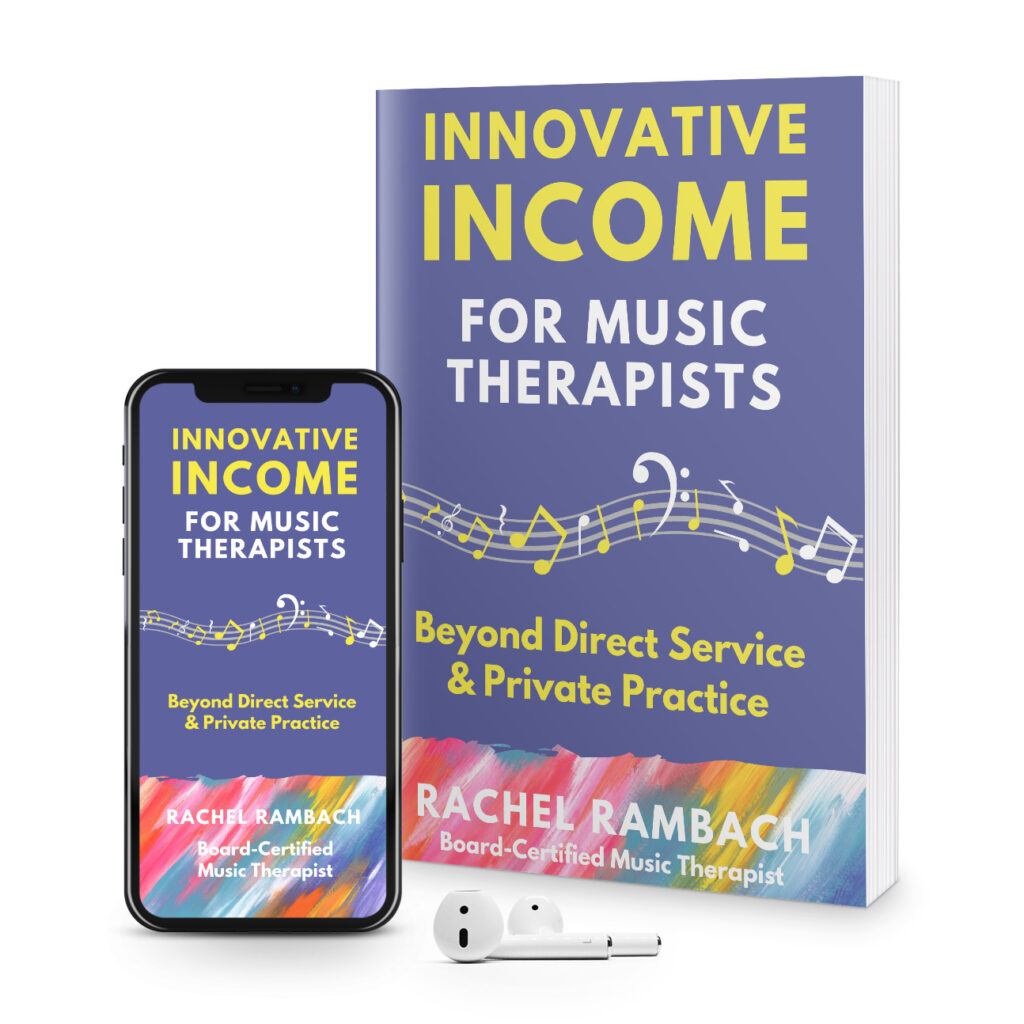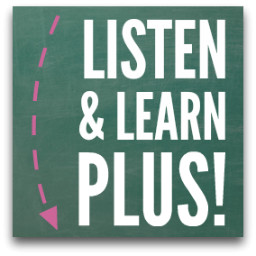by Rachel | Uncategorized
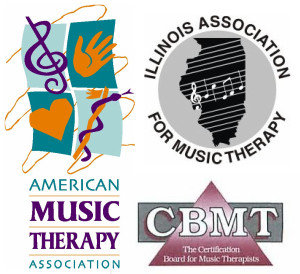 This week, professional association membership has been a hot topic in the digital world among music therapists. It all started when music therapist Kat Fulton posted a link to an article she wrote in which she listed 10 reasons why she is a member of the American Music Therapy Association.
This week, professional association membership has been a hot topic in the digital world among music therapists. It all started when music therapist Kat Fulton posted a link to an article she wrote in which she listed 10 reasons why she is a member of the American Music Therapy Association.
Kimberly, Michelle and I (also known as the Music Therapy Round Table) were so inspired by Kat’s article that we decided to continue the conversation on our podcast. So in Episode 9, we each discuss why we are members of various professional associations (both music therapy-related and otherwise) and what the benefits — and drawbacks — are.
So if you want to hear all about our thoughts on professional association memberships (among other things), head over to the MTRT and listen to Episode 9 or download it for free from iTunes. A perfect way to spend your Friday morning, in my opinion!
Speaking of Friday…what are your plans for the weekend? While my husband is in New Orleans for a guys’ weekend, I’m going to catch up on some recording I didn’t get done this week (thanks to a nasty cold) and spend some quality time with my dog. I’m so exciting, I know :) Have a good one!
by Rachel | Uncategorized
 Last week, I started a new feature on the blog called Ask Listen & Learn (follow the link to read the first installment, in which I answer a question regarding songs that aren’t for teaching). I have a new question from a reader to share with you all today. She writes:
Last week, I started a new feature on the blog called Ask Listen & Learn (follow the link to read the first installment, in which I answer a question regarding songs that aren’t for teaching). I have a new question from a reader to share with you all today. She writes:
I have an adult patient who loves Move Your Body Along, but I try to rock it up a big (because my patient is 30). No offense, but the original version of the song might be a little immature for his age. Could you give tips on modifying songs for the age of your patient?
This is a great question. I am constantly adapting and rewriting my own songs for my music therapy clients, not only to fit their unique needs but also to ensure that they are age-appropriate. I’ve cringed on more than one occasion when I’ve seen music teachers, or even other therapists, since “Old McDonald”, “Row Your Boat” and other preschool-level songs with teenagers and even adults with developmental delays. The fact is, just because a 30-year-old may have the cognitive capabilities of a 3-year-old, that doesn’t mean a nursery rhyme is appropriate for that individual. There are plenty of other options.
I work with over 100 students, aged 7-22, at my school. Functioning levels range greatly from class to class, and even within the four walls of one classroom. So I am always thinking on my feet, changing up words, lyrics, and beats to best serve my students in respect to their age and skill level. Here are a few pieces of advice for doing so based on my own experience:
- Let your student/patient make the song his or her own. This takes some of the pressure off of you (!) while allowing an opportunity for that student/patient to flex his or her creative muscles. Using the song example my reader gave, I open the floor to my students when we sing Move Your Body Along. They always come up with way better movement ideas than I do, anyway :) Present a song as-is, but then turn it into a songwriting activity so that the student/patient has control over the subject matter and actual lyrics.
- Give the song a beat. If you use a Mac, set up Garageband so that you can play a loop or beat while you sing with your student/patient. Better yet, let him/her choose the loop or beat. You’d be surprised at just how much this can punch up a song. Plus, adding technology to any activity will make it more appealing to older students/patients.
- Make the song an interactive experience. If your students/clients can communicate verbally, use a song merely as a conversation starter. I do this all the time with songs like Off to School Today, where it serves as a jumping off point to share ideas about the topic at hand. Sing a verse, let them share. Sing another verse, let them share some more. It’s fun to see where the conversation goes.
Of course, it is important to keep in mind that not every single song out there (even those in my collection) are suitable for older students and patients, no matter how you adapt it. So if you just can’t find a way to make a particular song work in a given situation, save it for another time and move along to the next one.
If you have a question you’d like for me to answer here at Listen & Learn, simply send me an email (and be sure to include that you’d like it shared on the blog).
by Rachel | Uncategorized
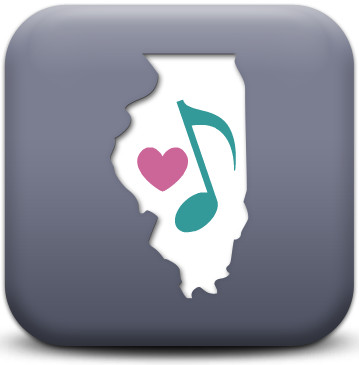 This week, we’re celebrating and advocating for music therapy (even more so than usual) in the state of Illinois. The Illinois Association for Music Therapy is holding its annual Fall Meeting and CMTE this Saturday at Illinois State University. I’m especially excited, since as Secretary/Programming Chair, I’ve been planning and preparing for this event over the last few months. The perfect culmination of an entire week devoted to music therapy!
This week, we’re celebrating and advocating for music therapy (even more so than usual) in the state of Illinois. The Illinois Association for Music Therapy is holding its annual Fall Meeting and CMTE this Saturday at Illinois State University. I’m especially excited, since as Secretary/Programming Chair, I’ve been planning and preparing for this event over the last few months. The perfect culmination of an entire week devoted to music therapy!
The goal of this week is to educate as many people as possible about music therapy and its many benefits. The Chicago Tribune featured fellow Illinois music therapist Emily Sevcik in an article called Tune In to Music Therapy Week — how cool is that? You can help join us in our efforts just by sharing links to Listen & Learn (you are here!) and the Illinois Association for Music Therapy via email, Facebook, Twitter, and so on.
Every week is Music Therapy Week for me, but it’s nice to have an “official” statewide one…especially since I get to spend part of it with my colleagues from all over Illinois (none of whom live near me). I’m sure I’ll have lots to share with you after our event on Saturday. Thanks for your support, and enjoy your weekend!
by Rachel | Uncategorized
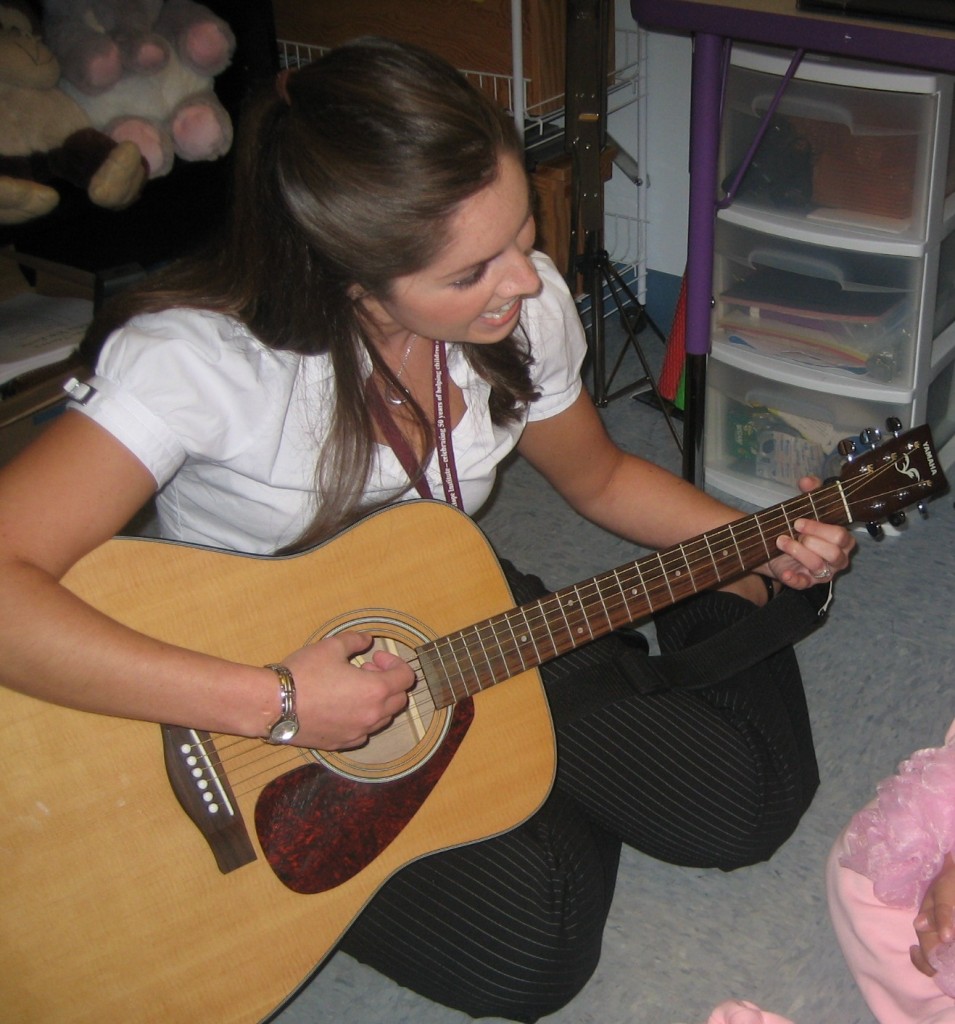 As I looked at the faces of my colleagues during my first week on the job, I could tell they were all silently asking this question. But really, I couldn’t blame them. Here I was, this 23-year-old kid fresh out of grad school, in my first “real” job, doing something no one around me had ever heard of. I put on a brave face, but I was scared.
As I looked at the faces of my colleagues during my first week on the job, I could tell they were all silently asking this question. But really, I couldn’t blame them. Here I was, this 23-year-old kid fresh out of grad school, in my first “real” job, doing something no one around me had ever heard of. I put on a brave face, but I was scared.
Scared that I wouldn’t be taken seriously (I wasn’t, at first). Scared that I wouldn’t know what I was doing (I didn’t, at first). Scared that this place would be too much for me (it was, at first). But time passed. As I got more comfortable, I became a better therapist; as I became a better therapist, my colleagues began to understand — and even enjoy — this music therapy thing. They saw the positive effects it had on our students, which was all that really mattered.
There are still lots of people who don’t “get” music therapy, who question its validity. I’m lucky to have been able to educate so many people simply by doing my job, but my work is not done yet. (Check out Kimberly Sena Moore’s video What is Music Therapy? for more on this topic, as well as a recent podcast episode I co-hosted where we explore this question in depth.)
by Rachel | Uncategorized
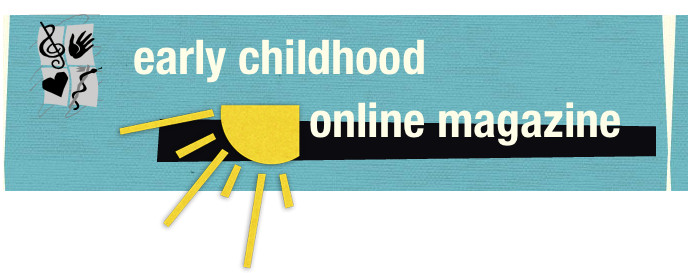 Happy September! Today marks not only the beginning of a new month, but also the official release of a brand new early childhood online magazine. Imagine is sponsored by the American Music Therapy Association and edited by Dr. Petra Kern, who serves as president of the World Federation of Music Therapy.
Happy September! Today marks not only the beginning of a new month, but also the official release of a brand new early childhood online magazine. Imagine is sponsored by the American Music Therapy Association and edited by Dr. Petra Kern, who serves as president of the World Federation of Music Therapy.
The inaugural issue contains over 50 contributions from 10 countries, including:
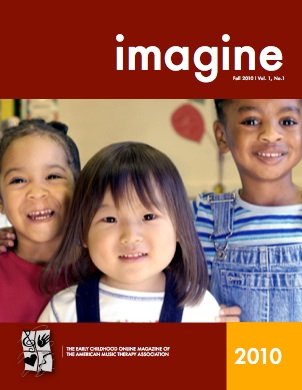
- latest research, trends, and clinical strategies
- interactive digital viewing mode
- podcasts, photo stories, teaching episodes
- international “color of us” series
- newsletter archive
- early childhood network platform
- an event calendar
I had the opportunity to contribute a resource list (pg. 91) — a joint effort between myself and Michelle Erfurt — as well as an original podcast on the topic of my Sunday Singalong videos (pg. 93). It is quite an impressive publication, and I hope you’ll take some time to check it out!
 This week, professional association membership has been a hot topic in the digital world among music therapists. It all started when music therapist Kat Fulton posted a link to an article she wrote in which she listed 10 reasons why she is a member of the American Music Therapy Association.
This week, professional association membership has been a hot topic in the digital world among music therapists. It all started when music therapist Kat Fulton posted a link to an article she wrote in which she listed 10 reasons why she is a member of the American Music Therapy Association.

 This week, we’re celebrating and advocating for music therapy (even more so than usual) in the state of Illinois. The
This week, we’re celebrating and advocating for music therapy (even more so than usual) in the state of Illinois. The  As I looked at the faces of my colleagues during my first week on the job, I could tell they were all silently asking this question. But really, I couldn’t blame them. Here I was, this 23-year-old kid fresh out of grad school, in my first “real” job, doing something no one around me had ever heard of. I put on a brave face, but I was scared.
As I looked at the faces of my colleagues during my first week on the job, I could tell they were all silently asking this question. But really, I couldn’t blame them. Here I was, this 23-year-old kid fresh out of grad school, in my first “real” job, doing something no one around me had ever heard of. I put on a brave face, but I was scared. Happy September! Today marks not only the beginning of a new month, but also the official release of a brand new early childhood online magazine.
Happy September! Today marks not only the beginning of a new month, but also the official release of a brand new early childhood online magazine. 
